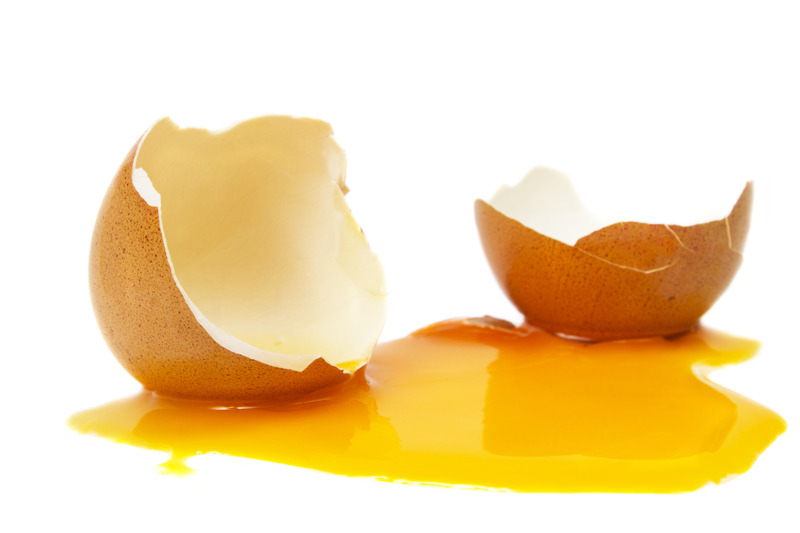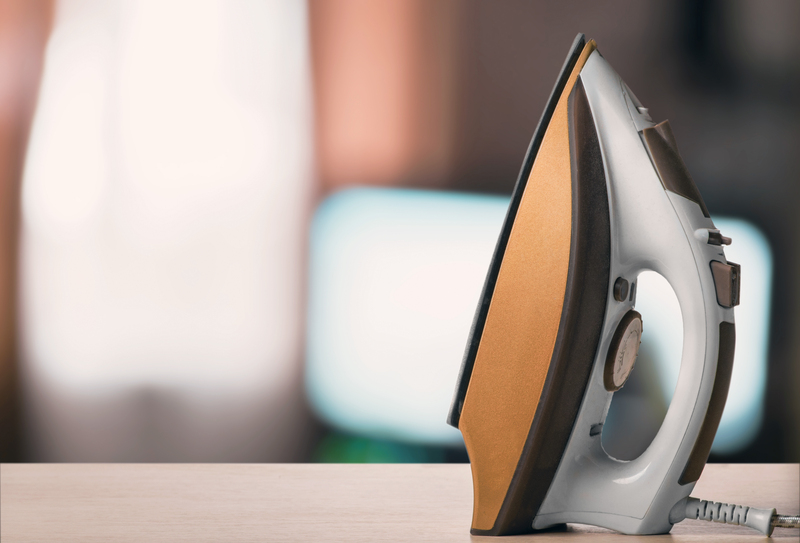Exploring Brilliant Jewellery Cleaning Methods
Posted on 17/08/2025
Exploring Brilliant Jewellery Cleaning Methods: A Comprehensive Guide
Jewellery holds special meaning for most people, whether it's a cherished family heirloom or a recent dazzling purchase. Over time, our favourite pieces can lose their luster, accumulating residues such as oils, lotions, and everyday dirt. Exploring brilliant jewellery cleaning methods is more than just restoring their shine--it's about preserving memories and ensuring their longevity. In this article, you'll find a detailed, SEO-optimized, and informative guide to the best ways to clean jewellery at home and professionally.

Understanding the Importance of Jewellery Cleaning
Regular maintenance and cleaning of jewellery are crucial for several reasons. Not only does it help keep your pieces looking spectacular, but it also preserves their value and prevents damage. Brilliant jewellery cleaning techniques ensure that your gemstones glitter and your metals gleam, bringing out the best in every piece.
- Keeps jewellery hygienic: Removes bacteria, sweat, and oils
- Extends lifespan: Prevents wear and tear from built-up residues
- Maintains value: Especially important for precious and semi-precious stones
- Enhances appearance: Restores natural brilliance and sparkle
Factors Affecting Jewellery Cleaning
Jewellery comes in many forms--gold, silver, platinum, diamonds, pearls, gemstones, and more. Each material and stone requires a unique cleaning method to avoid damage and preserve beauty. It's vital to identify your jewellery's materials before choosing a cleaning technique.
- Metal type (e.g., gold, silver, platinum)
- Gemstone hardness
- Presence of delicate embellishments
- Age and overall condition of the piece
Essential Tools for Home Jewellery Cleaning
Before diving into brilliant jewellery cleaning methods, gather these essential tools and materials for efficient at-home cleaning:
- Soft-bristled toothbrush or special jewellery brush
- Mild liquid dish soap
- Lukewarm or warm water
- Soft lint-free cloth
- Microfiber towel
- Tweezers or toothpicks for intricate designs
- Bowl or shallow container
Top DIY Jewellery Cleaning Techniques
Let's explore some of the best home techniques to restore brilliance to your rings, necklaces, earrings, and bracelets. These effective jewellery cleaning methods are safe, easy, and cost-efficient.
1. Classic Soap and Water Method
This tried-and-true technique is suitable for most jewellery, including gold, platinum, and hard gemstones like diamonds, sapphires, and rubies.
- Add a few drops of mild liquid dish soap to a bowl of warm water.
- Soak the piece for up to 20-30 minutes.
- Gently brush crevices with a soft toothbrush.
- Rinse carefully under running water and dry with a soft cloth.
Tip: Avoid harsh detergents or hot water, which can damage older pieces or delicate stones.
2. Baking Soda Paste for Tough Grime
Baking soda is a gentle, non-abrasive cleaner that effectively removes tarnish from silver and stubborn dirt from metalwork.
- Make a thick paste with three parts baking soda and one part water.
- Apply gently with a soft cloth, rubbing into the metal.
- Let sit for a few minutes before rinsing thoroughly.
- Dry with a lint-free towel.
Note: Avoid using baking soda paste on soft stones (pearls, opals, turquoise) or delicate gold filigree.
3. Vinegar Solution for Silver Jewellery
For tarnished sterling silver, white vinegar provides a natural and effective cleaning alternative.
- Soak silver pieces in a solution of 1/2 cup white vinegar and 2 tablespoons baking soda for 2-3 hours.
- Rinse carefully and buff dry.
Important: Do not use vinegar on pearls or gemstone jewellery; the acidity can cause irreparable damage.
4. Aluminium Foil and Baking Soda Bath
This classic cleaning trick for silver uses a chemical reaction to lift tarnish:
- Line a bowl with aluminium foil, shiny side up.
- Place the silver jewellery on the foil.
- Sprinkle with baking soda and pour very hot (not boiling) water to cover.
- Let sit for a few minutes, then rinse and dry thoroughly.
This process is ideal for pure silver items. Keep gemstone settings out of this solution!
5. Ammonia Solution for Diamonds
Diamonds' remarkable hardness means they can withstand a slightly stronger cleaning agent. Ammonia restores fiery brilliance, especially for diamond rings set in gold or platinum.
- Mix one part ammonia with six parts water in a small bowl.
- Soak jewellery for no longer than 60 seconds.
- Brush gently before rinsing and drying.
Caution: Never use ammonia on pearls, platinum, or coloured gemstones.
6. Toothpaste Hack for Silver
White, non-gel toothpaste with no whitening agents can polish tarnished silver bangles or chains.
- Apply a small amount with a soft cloth.
- Rub gently and rinse off thoroughly.
- Buff with a clean towel for enhanced shine.
Warning: Toothpaste can scratch softer metals or stones--use judiciously.
7. Cleaning Gold Jewellery
Gold can be successfully cleaned using simple soaking, but for heavy soiling:
- Combine a few drops of dish soap, a dash of salt, and a little baking soda in warm water.
- Soak for 10 minutes, then brush and rinse.
- Polish dry with a microfiber cloth.
Gold-plated pieces should be cleaned only with mild soap and water.
8. Delicate Pearl and Opal Care
Pearls, opals, and other soft gems require special handling. Naturally porous, these stones can suffer irreparable harm from soaking or harsh cleaners.
- Wipe gently with a soft, damp cloth after each wear.
- If needed, dip a cloth in a mild soap solution and wipe the pearls--never submerge them.
- Lay flat to dry.
Pro Tip: Store pearls and opals separately from harder pieces to avoid scratches.
Modern Jewellery Cleaning Methods: Gadgets and Devices
Technological innovation has brought convenient brilliant jewellery cleaning machines and gadgets into many homes. These devices offer powerful, professional-grade cleaning with minimal effort.
Ultrasonic Cleaners
Ultrasonic machines use high-frequency sound waves to dislodge dirt and grime, restoring shine to most types of jewellery. They're popular for engagement rings, wedding bands, and gemstone-encrusted pieces.
- Place pieces inside the cleaner's basket.
- Fill the tank with water and manufacturer-recommended cleaning solution.
- Run the cycle for the recommended duration (usually under 10 minutes).
Never use ultrasonic cleaners for:
- Pearls
- Opals
- Emeralds
- Any piece with glued settings
Steam Cleaners
Steam jewellery cleaners blast away grime with powerful jets of steam. They are used by professionals for deep cleaning, especially for diamonds and hard metals.
- Perfect for periodic, thorough cleans
- Not suitable for delicate, antique, or porous stones
Professional Jewellery Cleaning Services
Despite the effectiveness of at-home cleaning methods, your most treasured items should occasionally be entrusted to a professional jeweller. Experts use advanced technology and possess the skills to inspect for loose stones or settings and deep clean pieces with minimal risk.
- Annual professional cleaning and inspection is recommended
- Restores both appearance and security
- Opt for certified jewellers with good reviews and a reputation for care
Brilliant Preventive Care for Jewellery
Preservation is as important as cleaning. Incorporate preventive measures into your routine to reduce build-up and prevent tarnishing.
- Store jewellery separately in soft pouches or lined boxes to stop scratching and tangling
- Remove jewellery before swimming, bathing, or using harsh household chemicals
- Apply perfumes, lotions, and hairspray before putting on jewellery
- Wipe with a soft cloth after every wear to remove sweat and oil
Common Jewellery Cleaning Mistakes to Avoid
Even with the best intentions, missteps can lead to costly damage. Be sure to avoid these common errors:
- Using abrasive toothpaste or harsh brushes on soft metals
- Soaking pearls, opals, or fragile antique pieces in water
- Cleaning pieces with loose stones without professional inspection
- Using chlorine bleach or ammonia on coloured gemstones
- Mixing unknown metals or stones in the same cleaning solution
How Often Should You Clean Jewellery?
The frequency of cleaning your jewellery depends on how often you wear it and its materials:
- Everyday pieces: Clean gently every 1-2 weeks
- Occasional wear: Clean after each event
- Heirlooms and antiques: Professionally clean once a year
- Pearls and soft gems: Wipe down after each wear, deep clean annually

Frequently Asked Questions About Jewellery Cleaning
1. Can I clean all jewellery with soap and water?
Mild soap and water are safe for most metals and hard stones, but avoid soaking porous gems like pearls or turquoise.
2. What is the safest method for diamond rings?
Regular gentle brushing with soap and water is safe and effective. Use an ammonia solution sparingly to boost brilliance, ensuring no delicate stones are present.
3. How do I remove tarnish from silver?
A baking soda paste or an aluminium foil and baking soda bath are highly effective for removing silver tarnish.
4. Can professional machines harm my jewels?
Ultrasonic and steam cleaners are excellent for hard stones and metals, but avoid them for organic or fragile pieces.
Conclusion: The Art and Science of Brilliant Jewellery Cleaning
Exploring brilliant jewellery cleaning methods is a worthwhile pursuit for anyone who values their collection. With regular care and by using the right techniques for each material, you can keep your jewellery as luminous and dazzling as the day it was made. Whether you prefer the convenience of at-home cleaning or the thoroughness of professional services, these indispensable tips will help you maintain the sparkle and sentimental value of your favourite pieces for years to come.




